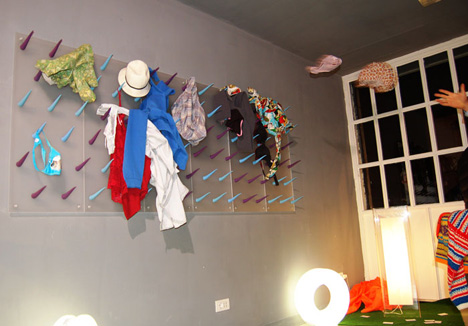By Andrew Liszewski
Researchers at the University of Washington and Intel have come up with a clever way to expand the desktop real estate of a laptop, without increasing the size of the display or the hardware. Well, relatively speaking. Their Bonfire concept adds a set of cameras and compact pico projectors to either side of the laptop’s screen which projects onto the tabletop of wherever you’re working. Now besides functioning as an extra set of displays on either side of you, the cameras also allow for a certain level of real world interactivity. So for example, you could quickly ‘scan’ a photo by simply placing it next to your laptop, or the software could detect when you’ve removed and placed your headphones on the table, automatically pausing your music.
The concept was recently shown at the ACM Symposium on User Interface Software and Technology, and while the setup seen in the video is obviously a bit bulky at this point, the size of cameras and pico projectors will inevitably one day shrink to the point of making this concept totally plausible.
[ Bonfire: a nomadic system for hybrid laptop-tabletop interaction ] VIA [ GadgetReview ]





I really hope this gets the funding and attention it needs to become reality. I wasn't terribly excited with the MS Surface, as its just a touch feedback all in one in a table, and the iPad is too similar to the tablets that doctors have used for several years now. This though..this has the real potential to be everything the examples I gave could never hope to, the first real change to how we interface and use computers in our daily lives since the introduction of the mouse.
I really hope this gets the funding and attention it needs to become reality. I wasn't terribly excited with the MS Surface, as its just a touch feedback all in one in a table, and the iPad is too similar to the tablets that doctors have used for several years now. This though..this has the real potential to be everything the examples I gave could never hope to, the first real change to how we interface and use computers in our daily lives since the introduction of the mouse.